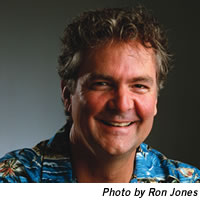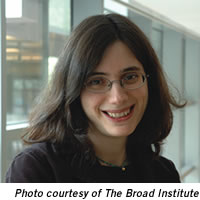
|
{ C O N T E N T S }
Volume 11, Issue 1 ISCB Honors The ISMB Organization PLoS Computational Biology Overview 11th Israeli Bioinformatics Taking a Stand on Software Sharing ISCB Members Speak Out on US Entry Visa Issues ISCB’s New Software MentorNet Report Card: Year Two In Memory of Cover Image
|
ISCB Honors David Haussler & Aviv Regev
|

 “[David] Haussler’s group was one of the pioneers of machine learning in bioinformatics, introducing Hidden Markov Models for the statistical analysis of patterns in biological data,” says Brunak. However, Haussler’s recent achievements have been more in the application of bioinformatics methods than in their development. Since 1999, he has been one of the principal figures in sequencing, and later analysing, the human genome and those of other mammals, and in mining this genomic information for insight into vertebrate evolutionary history.
“[David] Haussler’s group was one of the pioneers of machine learning in bioinformatics, introducing Hidden Markov Models for the statistical analysis of patterns in biological data,” says Brunak. However, Haussler’s recent achievements have been more in the application of bioinformatics methods than in their development. Since 1999, he has been one of the principal figures in sequencing, and later analysing, the human genome and those of other mammals, and in mining this genomic information for insight into vertebrate evolutionary history.  Brunak describes 2008 Overton Prize winner Aviv Regev as “a role model for how theoretical computer science can be applied to understanding biological organisms as systems.” Trained initially at Tel Aviv University, she knew that her interests lay in bioinformatics “from day one.” She made her first contribution to the field developing mathematical models for the evolution of DNA methylation. It was at that early stage that she realized the value of synergy between computational and “wet lab” biology. “There was no data for one critical phylogenetic group that I was studying, so I went to work in the lab at The Hebrew University to fill in the gaps,” she said. “This experience gave me a good idea of how important it is to anchor theoretical biology in the real world.”
Brunak describes 2008 Overton Prize winner Aviv Regev as “a role model for how theoretical computer science can be applied to understanding biological organisms as systems.” Trained initially at Tel Aviv University, she knew that her interests lay in bioinformatics “from day one.” She made her first contribution to the field developing mathematical models for the evolution of DNA methylation. It was at that early stage that she realized the value of synergy between computational and “wet lab” biology. “There was no data for one critical phylogenetic group that I was studying, so I went to work in the lab at The Hebrew University to fill in the gaps,” she said. “This experience gave me a good idea of how important it is to anchor theoretical biology in the real world.”